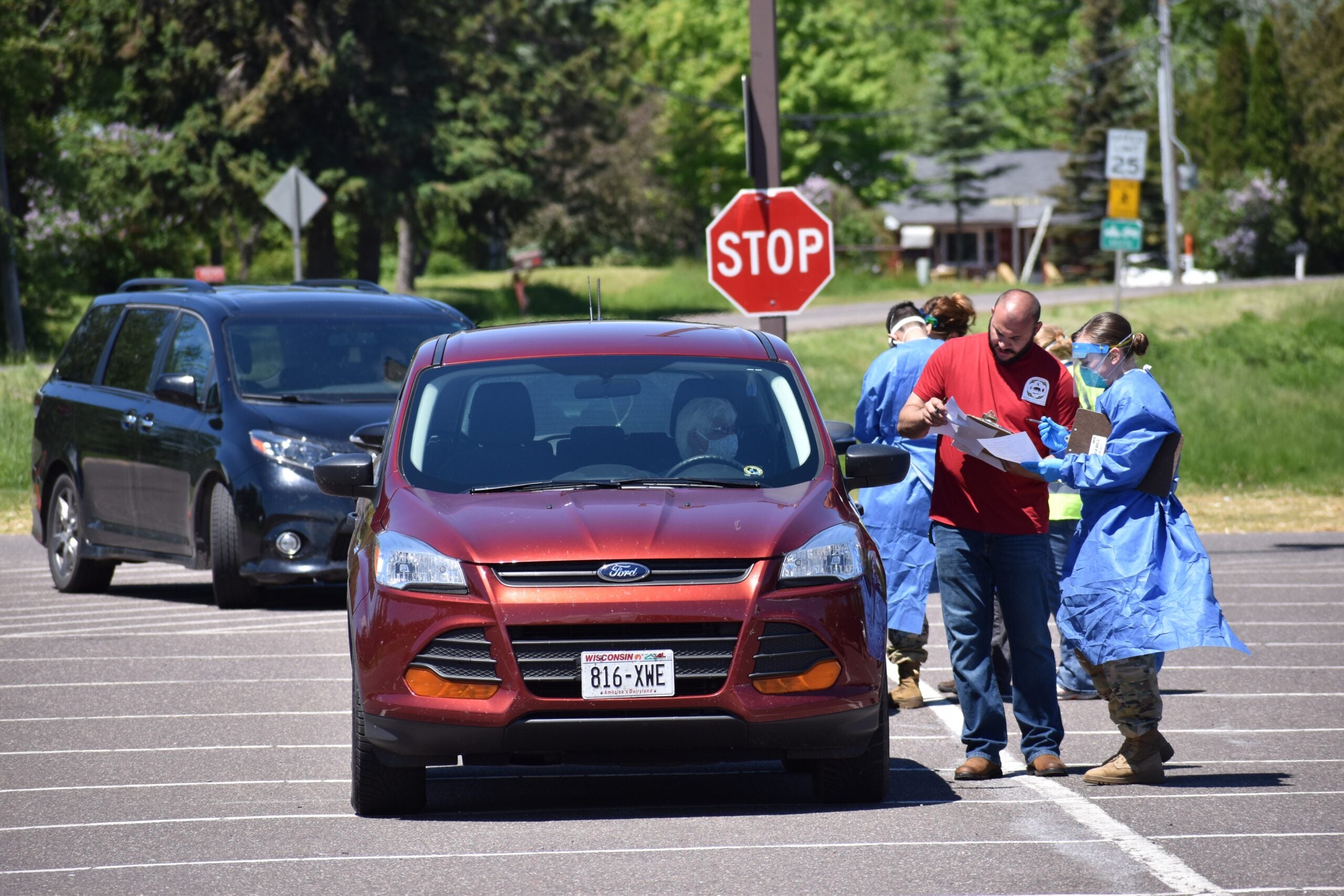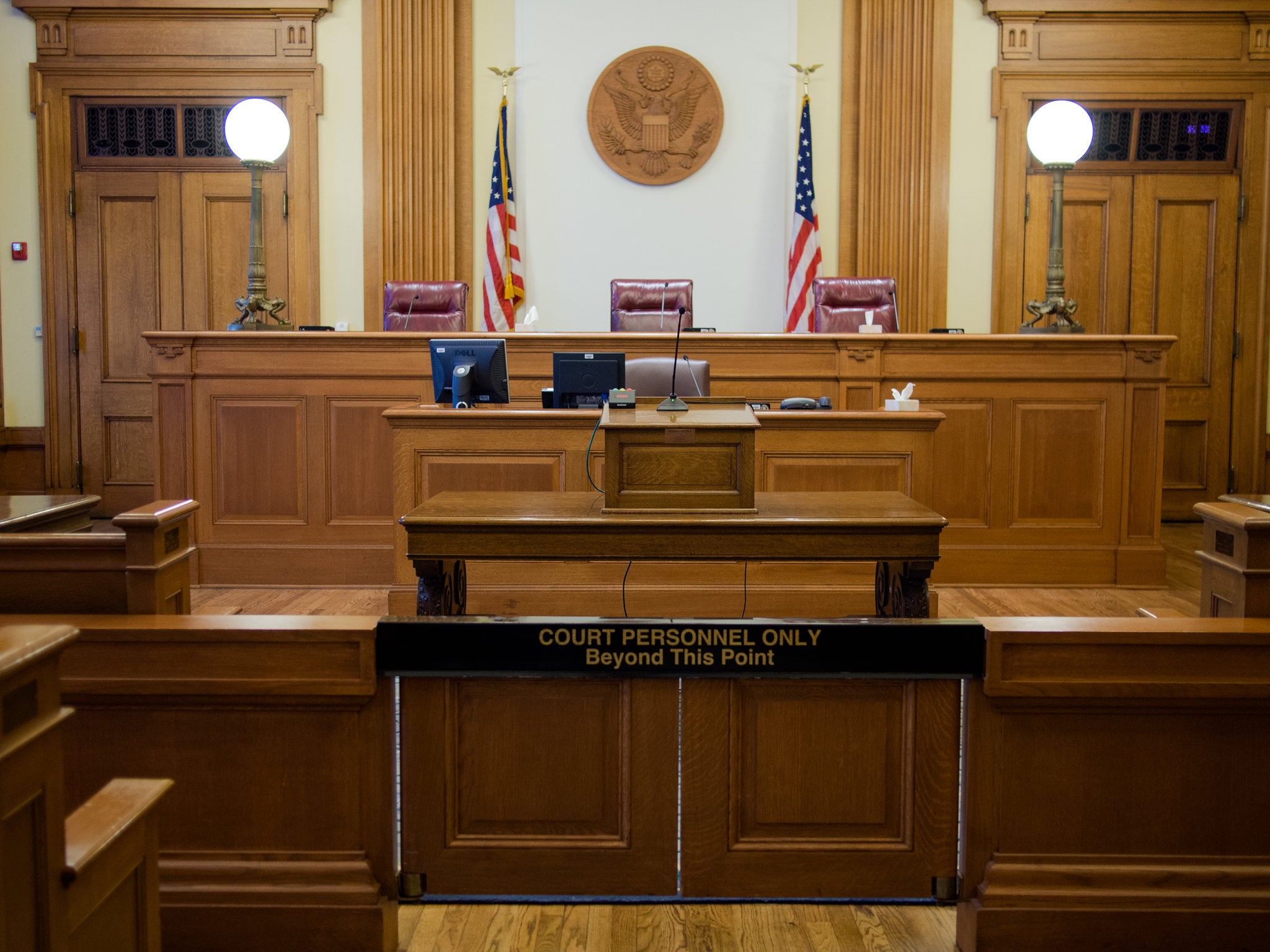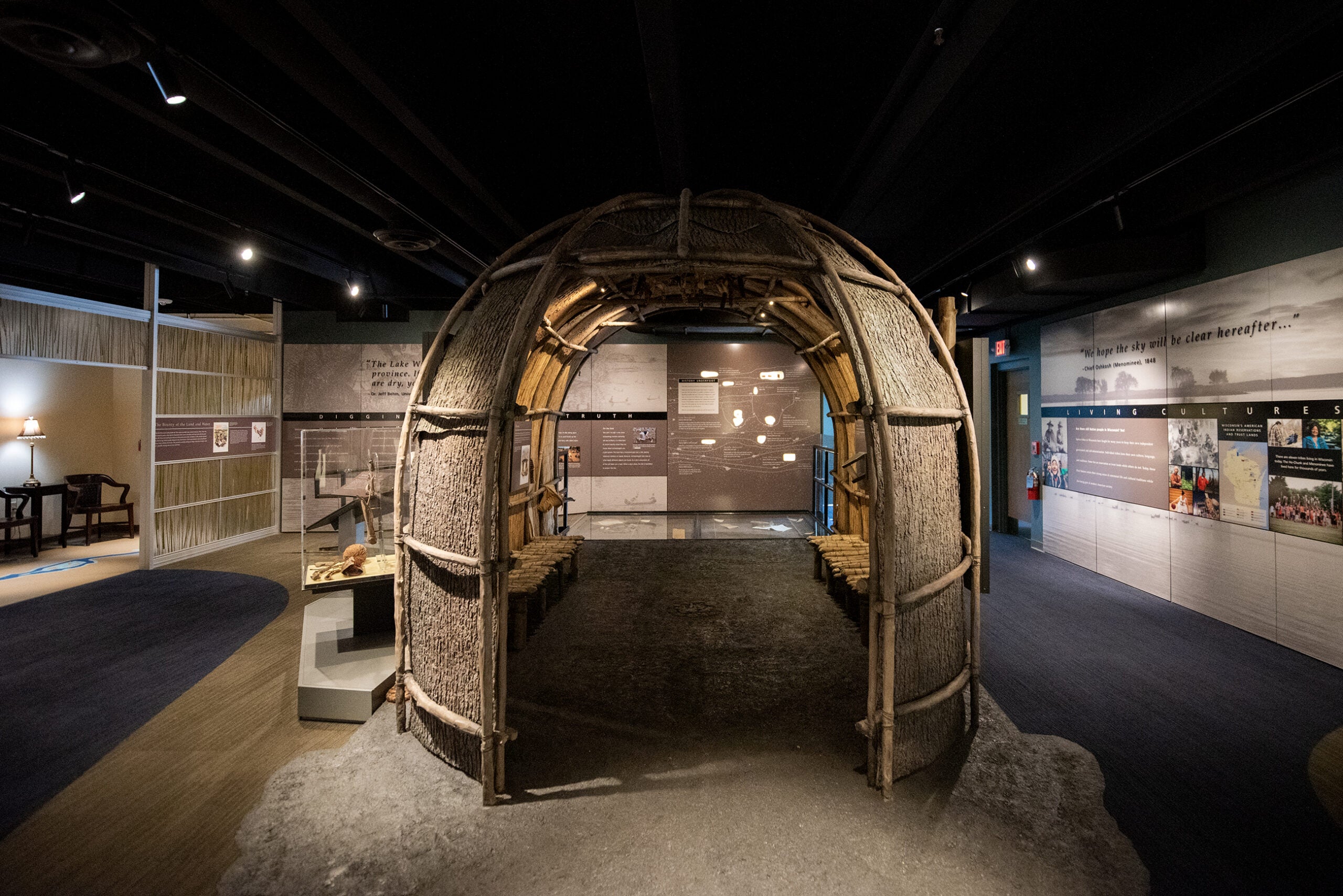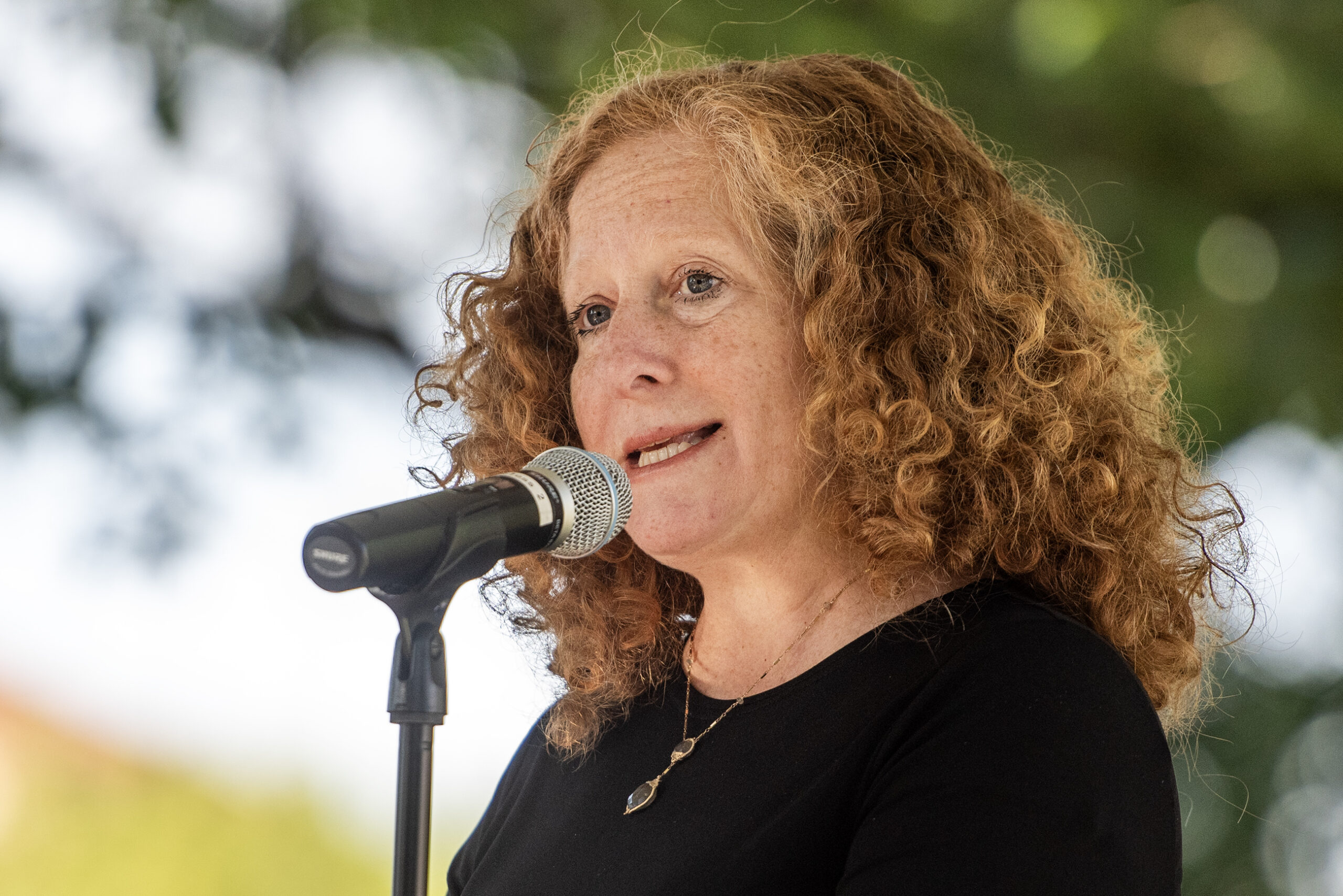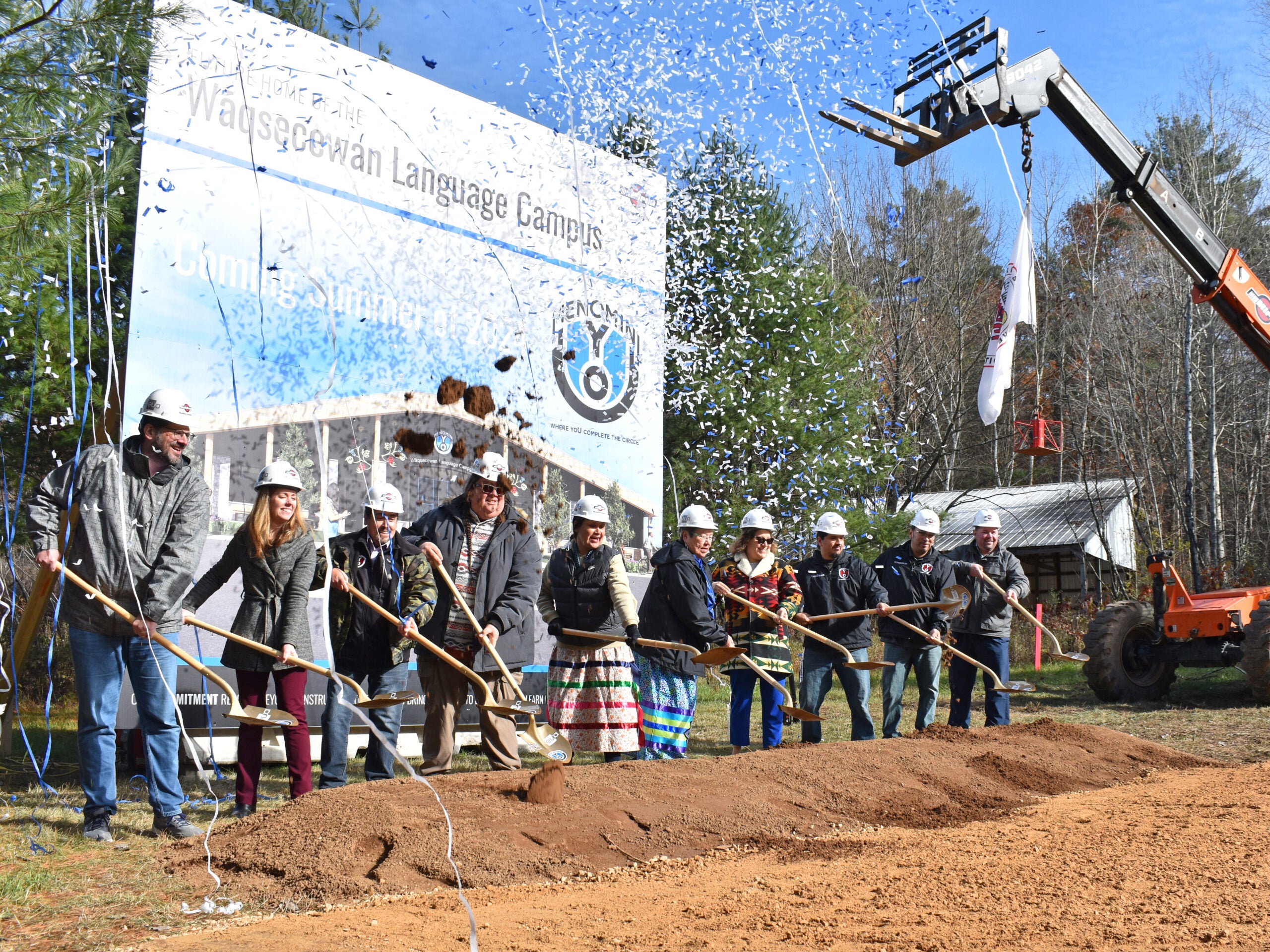Larry and Alice Deragon waited in line for about an hour to get tested for the coronavirus at a drive-thru testing event in Red Cliff. The two are members of the Red Cliff Band of Lake Superior Chippewa, and they live just outside the reservation.
The couple wanted to get tested just to be on the safe side since they’re both up there in years. He’s 80 and she’s 76 years old.
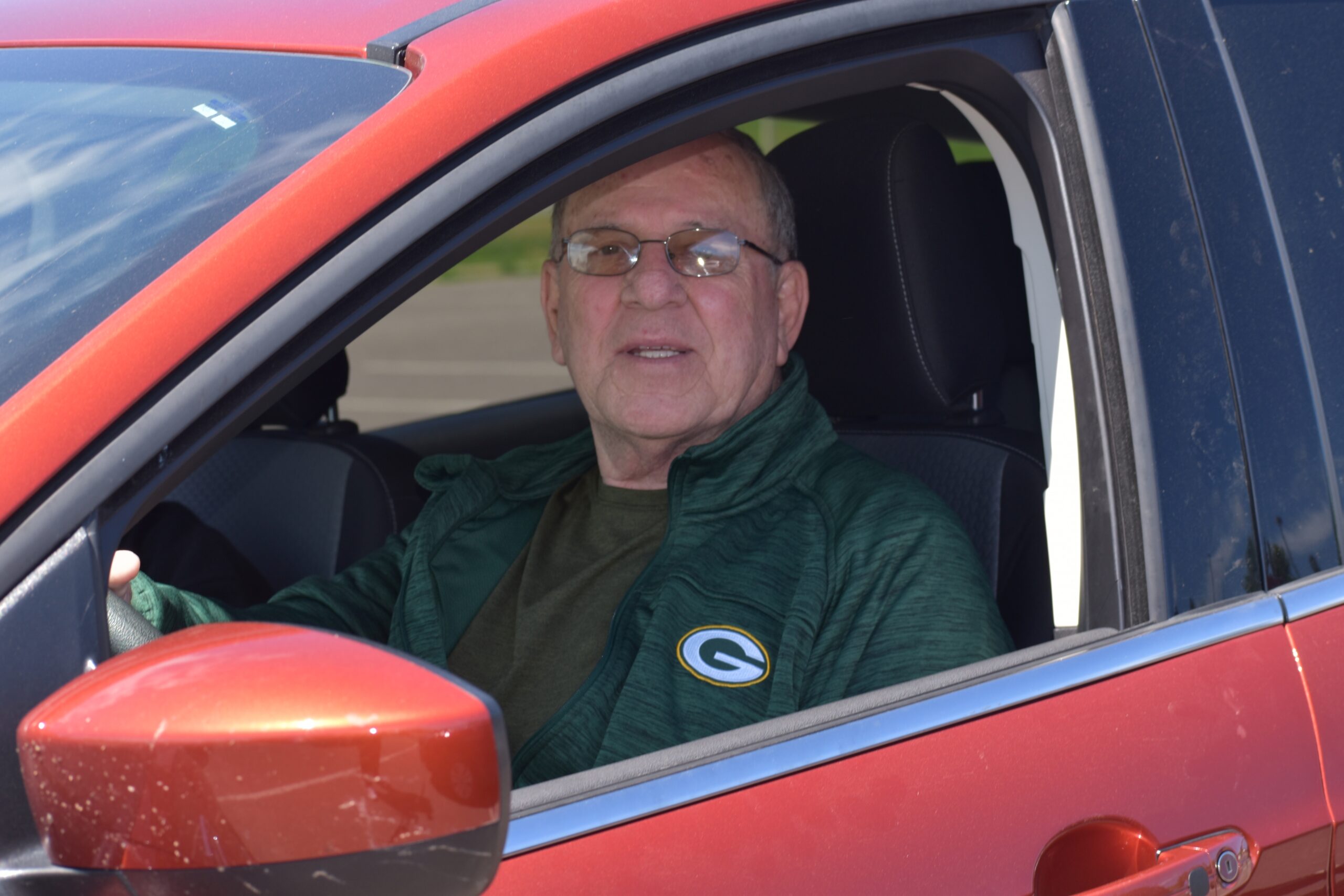
Danielle Kaeding/WPR
Stay informed on the latest news
Sign up for WPR’s email newsletter.
“I have a heart problem, and I have high blood pressure and I’m a diabetic. So, she’s healthier than I am,” Larry chuckled.
Alice said she’s also had some heart issues, but nothing serious. Yet, the two are serious about taking precautions to avoid the virus, doing daily temperature checks and wearing masks. They stick pretty close to home because she feels it’s safer. Both are concerned because they know they’re at higher risk of developing more serious symptoms, and coronavirus cases have grown in the weeks since the Wisconsin Supreme Court struck down the state’s “Safer at Home” order.
But, the steps they’ve taken to avoid the virus appear to have paid off. Their results came back negative along with the 350 other people who attended the community testing event offered by the Wisconsin National Guard, the Red Cliff tribe and Bayfield County.
Tribal communities in Wisconsin haven’t seen a spike in COVID-19 cases like some in other parts of the country, such as the Navajo nation, which has seen some of the highest infection and death rates in the country. However, COVID-19 diagnosis rates are higher on or near reservations in Wisconsin, according to the Great Lakes Inter-Tribal Epidemiology Center.
Native Americans are among groups at higher risk for contracting the virus who have also seen higher rates of hospitalization nationwide. They make up 1 percent of the state population, as well as 1 percent of the state’s confirmed COVID-19 cases and deaths.
Many tribes kept their own stay-at-home restrictions in place when the Supreme Court struck down the state’s “Safer at Home” order. They say those restrictions and services like delivering groceries, meals and medications to those at risk helped to minimize exposure. As cases have surged in Wisconsin, tribes are remaining vigilant of the threat the disease poses to their members.
That’s why surveillance is so important as tribes have begun reopening, according to Red Cliff Tribal Chairman Rick Peterson.
“Testing is going to be a huge part of learning if anybody within the community has it, and then proper precautions can be taken to contain it,” said Peterson.
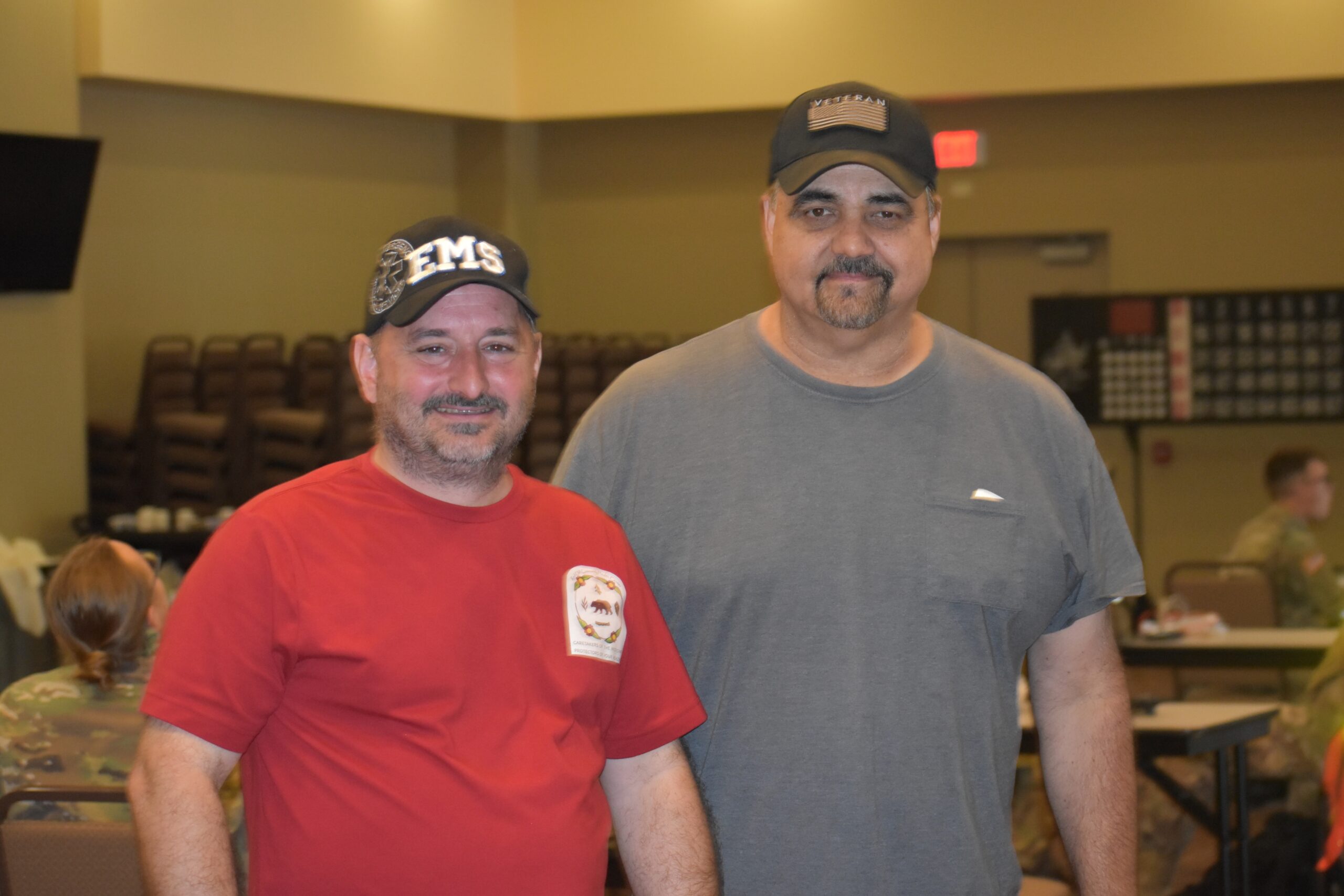
A number of factors place Native Americans at higher risk for COVID-19, like multi-generational families living under one roof or limited access to running water or power in some cases, according to Jessica Atwell, infectious disease epidemiologist with the Johns Hopkins Center for American Indian Health.
“The other thing is that there, in many cases, are high rates of underlying conditions that we know can predispose people to more severe disease,” Atwell said. “So things like diabetes and heart disease, when those conditions are present on top of the environmental factors, that can lead to increased risk.”
Native Americans are 50 percent more likely to have heart disease and twice as likely to have diabetes compared to their white counterparts nationwide. In Wisconsin, a state survey released in 2015 shows the risk for heart disease among Native Americans is largely the same as the rest of the state although diabetes is found at higher rates.
Diabetes is common on the Menominee Indian Tribe’s reservation, according to Joan Delabreau, chairwoman for the tribe’s governing body. Menominee County, where her tribe is located, has the worst health outcomes in the state, according to the most recent county health rankings. Delabreau adds housing is limited on the reservation and the vast majority of their more than 9,000 members are aging.
“We can have one or two, sometimes three generations living in the same household,” said Delabreau. “So, you have a wide variance of ages, a high variance of risk factors, and they’re all in the same household, so COVID could be very devastating.”
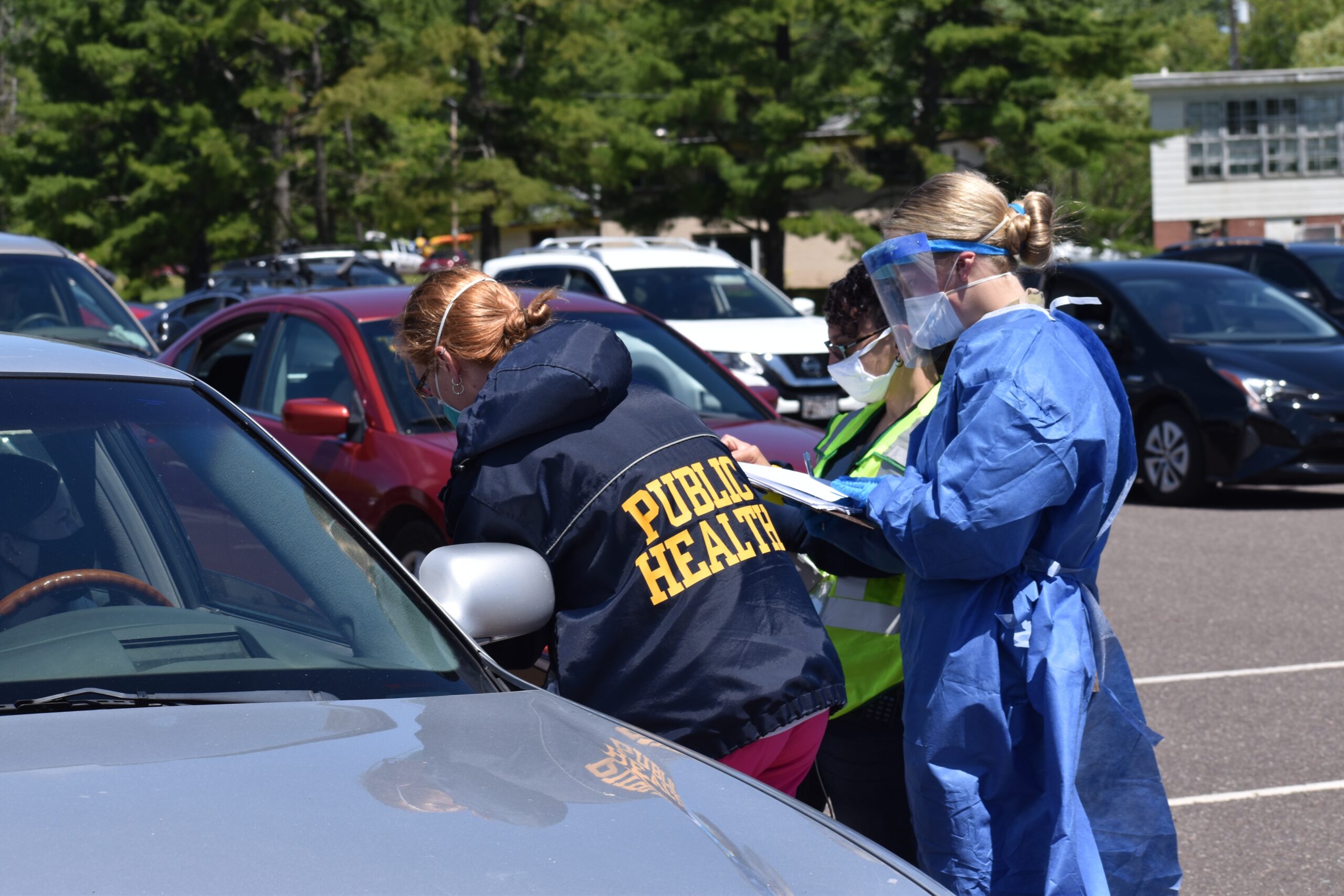
Danielle Kaeding/WPR
The Menominee Tribe and Stockbridge-Munsee Community worked with the Wisconsin National Guard to test almost 1,100 people in May. Delabreau said that was key for their reopening plans because the tribe’s clinic didn’t have the capability to test that many people. She said the tribe was lucky when it received rapid testing from Indian Health Service, which provides public health services to 574 federally recognized tribes nationwide.
Like many states, the tribe didn’t have access to supplies in the early days of the pandemic.
“We had to wait on Indian Health giving us what they could, so there was just no way we could have gotten the quantity of testing done,” said Delabreau. “We just wouldn’t have been able to do it.”
The Oneida Nation also struggled with testing until it received test kits from the state, according to Debra Danforth, operations division director with the Oneida Comprehensive Health Division.
“At about the same time, we were able to secure the analyzers through the Indian Health Service,” said Danforth. “So, we actually can do testing here on site, as well as the drive-thru testing now.”
Danforth said they’ve received a good response from the agency as far as funding. Indian Health Service has distributed around $31 million to the state’s 11 tribes as part of $1 billion awarded to the agency under the federal coronavirus aid bill and $64 million provided under the Families First Coronavirus Response Act.
As of July 2, the agency’s Bemidji Area Director Daniel Frye said around 14 percent of roughly 106,000 registered tribal members had been tested across the region, which includes Wisconsin. He noted that’s a higher rate of testing than the general population.
“Although there were some difficulties with testing at the forefront, we have multiple platforms to test now,” said Frye.
He said that includes rapid tests that have been provided to every tribe in Wisconsin, as well as tests provided by the state. Gov. Tony Evers has said the state will provide free testing to tribal members and send 1,000 tests per week to tribal health clinics. Indian Health Service has provided at least 6,200 tests to the state’s 11 tribes as of this month. Frye feels the agency’s response during the pandemic has been adequate.
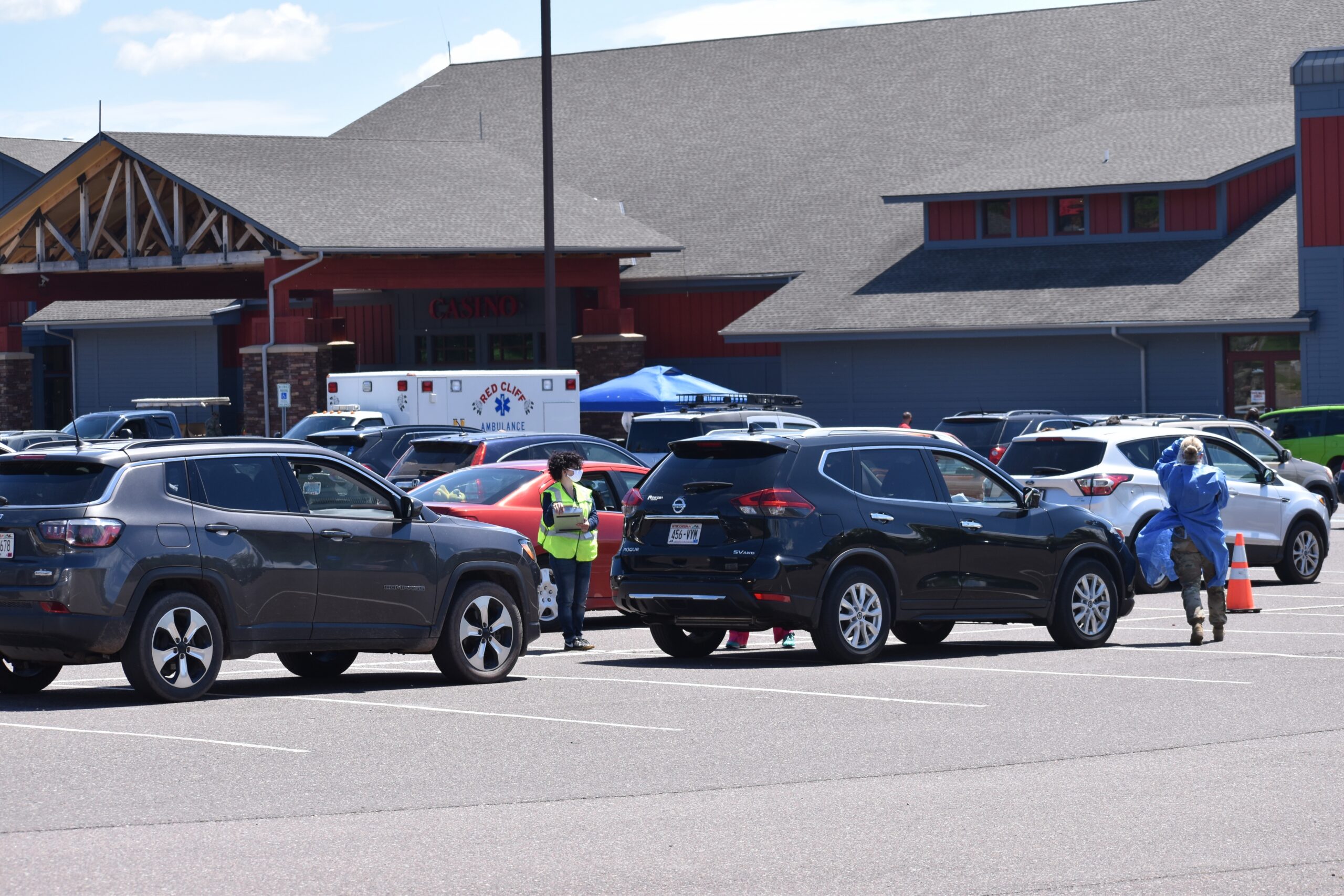
Danielle Kaeding/WPR
But, others feel tribes were left to fend for themselves in the early days of the crisis, including Bryan Bainbridge, CEO for the board of the Great Lakes Inter-Tribal Council.
“Everything is always appreciated when it comes to getting assistance but, there’s responsibilities here too that are supposed to be upheld,” said Bainbridge.
Bainbridge and tribal advocates highlight that the agency tasked with providing care to tribes has been historically underfunded. Spending has increased in recent years, but the amount of money spent on care for individuals is far less than other federal programs like Medicare and Medicaid. Government audits caution against comparing programs because of the differences in needs among those served.
Yet, health professionals like Atwell with Johns Hopkins say there needs to be a better grasp of the long-standing racial and health disparities among tribal communities.
“And resource limitations that put these at greater risk for pandemics like this one, and have done so in the past and will do so in the future unless we can work together to address those underlying challenges that lead to disparities in health,” said Atwell.
Those challenges include higher rates of poverty and a lack of insurance coverage. Census data shows as many as 30 to 40 percent of families are living in poverty on some reservations in Wisconsin. State figures have also found lower rates of those insured than the rest of the population.
In addition, some tribal health facilities may be limited in the services they offer. When services aren’t available, people may have to travel long distances to receive care at outside facilities. But, the Indian Health Service program that pays for outside care, known as purchased referred care, has limited funding, according to Gail Nahwahquaw, tribal affairs director with the Wisconsin Department of Health Services.
“I think that’s probably one of the larger underlying issues for tribal members,” said Nahwahquaw. “While they have access to primary health care, they don’t really have access to any services outside of the tribal clinic or outside of their community. That access is really limited.”
Funding increases and Medicaid expansion have allowed an expansion of care purchased at outside facilities, according to Indian Health Service. The agency has also said COVID-19 testing and treatment meets its priority for payment. But, if a tribal member was hospitalized for COVID-19, Nahwahquaw fears a long stay could deplete that source of funding very quickly.
Like many medical providers, tribes have also dealt with lost revenues as a result of postponing routine visits and elective surgeries. Danforth with the Oneida Nation said they’ve had to let go around 300 employees at their health center as part of more than 1,900 layoffs or furloughs due to the COVID-19 crisis.
“When you’re in the middle of a public health pandemic, having to let employees go within the health field is concerning for us,” she said. “But, we’re hoping that we’re going to be able to bring a lot of those employees back as we move forward.”
Lawmakers, including Democratic U.S. Sen. Tammy Baldwin, have urged congressional leaders to provide more funding for tribal health facilities. Tribal health advocates want lawmakers to provide more funding for Indian Health Service to aid tribes with coronavirus response in its next relief package, which the Trump administration wants lawmakers to pass before their August recess.
Wisconsin Public Radio, © Copyright 2024, Board of Regents of the University of Wisconsin System and Wisconsin Educational Communications Board.

